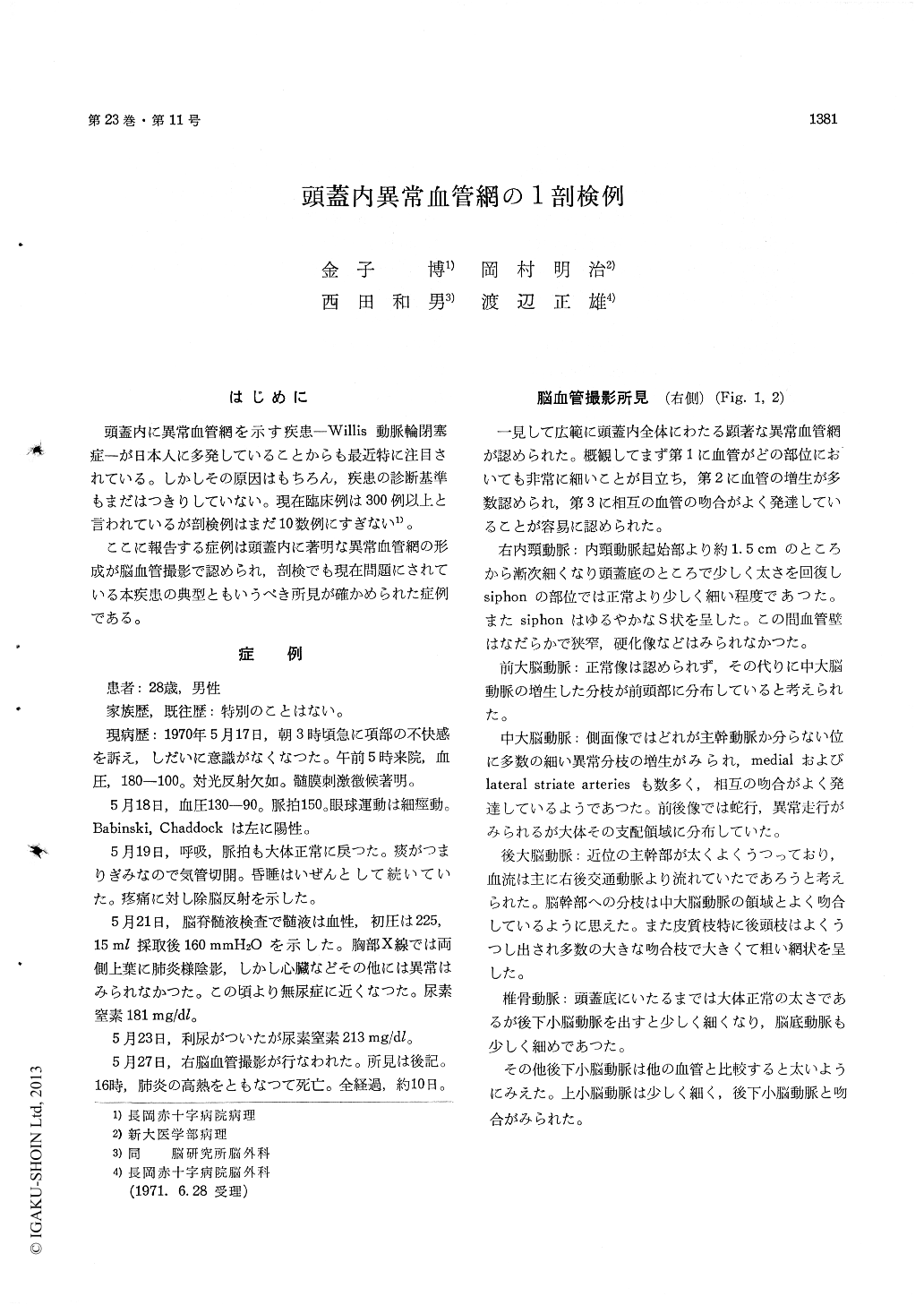Japanese
English
- 有料閲覧
- Abstract 文献概要
- 1ページ目 Look Inside
はじめに
頭蓋内に異常血管網を示す疾患—Willis動脈輪閉塞症—が日本人に多発していることからも最近特に注目されている。しかしその原因はもちろん,疾患の診断基準もまだはつきりしていない。現在臨床例は300例以上と言われているが剖検例はまだ10数例にすぎない1)。
ここに報告する症例は頭蓋内に著明な異常血管網の形成が脳血管撮影で認められ,剖検でも現在問題にされている本疾患の典型ともいうべき所見が確かめられた症例である。
Particularly in Japan, it has recently drawn interest that there is a group of diseases characteriz-ed by occulsions of the cerebral arterial trunks and the formation of intracranial Rete Mirabile. This typical case is presented.
28ys, male. He died under clinical diagnosis of subarachinoideal hemorrhage. In his course he had been detected conspicuous "Rete Mirabile" diffusely in the intracranial space by cranioangiography. And those changes were also verified by autopsy.
Macroscopically markedly fine slender appearance due to hypoplasia, compensive proliferation in the number of the vessels and remarkable development of the collateral anastomotic pathways among others were seen in the intracranial vessels. At the bi-lateral trunks of anterior cerebral arteries, complete occulsions of the lumina were histologically detected. Mechanism of the obstruction is thought that the formation of collateral anastomotic pathway renders it unnecessary for hypoplasia of the vessels to supply the blood, consequently the lumina of the vessels are obliterated secondarily.
In addition, abnormal large deposit of calcium on the internal elastic fibers of the bilateral vertebral arteries, anomalous lesions of other vessels, sym-metrical character of the intracranial changes and so on.
In summary from the facts as remarked above. we are strongly in favor of congenital hypothesis as the pathogenesis of the disease.

Copyright © 1971, Igaku-Shoin Ltd. All rights reserved.


